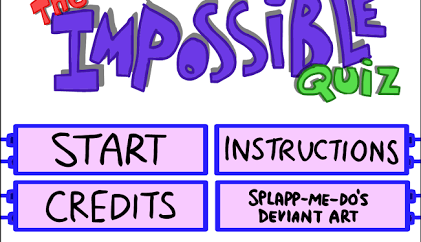Your caretaking is under quiet surveillance
Keep exploring
Continue your Untime session with more narrative adventures, action trials, and puzzle standouts.

Geometry Dash Spam

The Impossible Quiz

Water Color Sort

Fireboy and Watergirl: Ice Temple

Take Care of Your Own Shadow Milk

Pips NYT

Hotline Miami

NSR Street Car Racing

Steal A Brainrot Unblocked

Retro Bowl 26
Every routine has a watcher
Enter a clinic where kindness and compliance are counted
Human Expenditure Program places you in a sterile evaluation suite where Harvey Harvington depends on your patience, precision, and empathy. You are not chasing monsters through hallways; you are brushing teeth, plating food, sorting pills, and tidying a narrow room while a silent system converts choices into data. The pace seems gentle until you realize every click, delay, and correction is recorded. In Human Expenditure Program, ordinary care becomes a psychological maze because the rules are never fully stated, the feedback is cryptic, and the consequences echo across later scenes.
The first minutes lull you with pastel hues and soft interface tones, then the veneer splinters. UI elements stutter when you cut corners. A faint chime becomes a reprimand masquerading as a reward. You begin to wonder whether you are helping Harvey or training yourself to obey. Human Expenditure Program thrives on that ambiguity. It rewards meticulous attention yet punishes mechanical indifference, pushing you to find a rhythm that feels human under an inhuman lens. Replay after replay, you will catch yourself adjusting micro-habits: where to place the cup, how long to hover over a checkbox, when to comfort, when to hurry. Each pattern shifts the nightly report—and, increasingly, your own interpretation of what a "good caregiver" means.
How play unfolds, one quiet obligation at a time
Every day in Human Expenditure Program opens with a compact checklist that belies its weight. Tasks look familiar—hygiene, meals, meds, rest, tidying—but their execution invites scrutiny. Brushes move with noticeable traction, spoons clink with a telltale cadence, and pill trays resist sloppy sorting. The interface asks for intention, not spam clicks. Rush, and your accuracy dips; hesitate, and the schedule slips. The evaluation engine never states its rubric outright, but you learn through texture: a clipped animation, a dimming icon, a delayed confirmation, a ledger snippet that sounds almost clinical and almost moral.
Crucially, Human Expenditure Program is not about right versus wrong in a simple sense. It is about competing goods: efficiency versus grace, compliance versus compassion, stability versus spontaneity. When Harvey falters, you can re-sequence your routine—serve tea first, dim lights earlier, rearrange clutter to shorten later motions. This measured improvisation is where the design shines. The same scene supports different priorities, and the audit notices. Over multiple loops, you will cultivate a caretaker persona: the optimist who narrates gently; the pragmatist who trims flourishes; the perfectionist who polishes everything. The system observes—and answers—with new modifiers and lines in the daily brief.
Signals, stings, and the quiet language of the UI
Instead of jump scares, Human Expenditure Program leans on ambient dread. A pastel button desaturates after a curt interaction. A health bar breathes almost imperceptibly when you linger on comforting actions. Louder hints come sparingly: a glitch on the report screen, a clipped audio sting when the ledger disapproves, a line of text that reads like a memo from no one in particular. You will start reading the room like an instrument panel, mapping cause and effect without explicit tooltips. That interpretive work is the horror: you teach yourself to see patterns in a bureaucracy designed to keep them hidden.
Replay structure and branching evaluations
Each completed day compiles into a cold, segmented assessment. In Human Expenditure Program, those reports do more than score; they tilt the next day’s context. Maybe Harvey is calmer because you paced meals thoughtfully; maybe he is anxious because you over-optimized and forgot warmth. The branching does not shout. It accumulates. After two or three loops, the endpoints begin to diverge—small changes in phrasing, new overlays, altered timing windows, an extra step to prep a room. Your curiosity becomes the fuel: what if you front-load rest? What if you deliberately slow down on hygiene to speak with Harvey longer? What if you test the boundary between gentle ritual and rigid throughput? The audit reacts, and the endings widen.
Why it lingers after the browser tab closes
Horror here is not the fear of being chased; it is the suspicion that caring is being priced. Human Expenditure Program confronts a modern anxiety—metrics ruling what should be human judgment. You begin optimizing out of habit, then notice how optimization bleaches nuance. Yet you cannot abandon structure either, because Harvey needs reliability. The game’s accomplishment is to make that tension tactile through click timings and micro-animations. When you do well, you feel oddly hollow, and when you stumble, the relief of acting more like a person than a process creeps in. Few games achieve that double bind, and fewer do it with such restraint.
Practical tips for your first sessions
1) Establish a baseline routine before chasing perfection. In Human Expenditure Program, running cleanly once teaches more than restarting after every minor misstep. 2) Watch the interface breathing—small pulses, subtle fades—because they reveal which actions the audit tracks closely. 3) When a prompt offers room for tone, choose the phrasing that suits your caretaker persona and stick to it for a full cycle to see its systemic effect. 4) Do not fear re-sequencing chores; sometimes swapping two steps reduces friction later and the evaluation quietly approves. 5) Revisit the report screens and read between the lines; word choice and ordering hint at hidden multipliers.
Who will appreciate this experience
If you enjoy narrative systems where procedure is the story, Human Expenditure Program belongs on your shortlist. Fans of observation-driven sims, minimalist horror, and choice-through-routine design will find a clean, replayable loop that rewards careful attention. It is approachable—you can finish a day in minutes—but it is also sticky, because that next report might validate or unsettle your last run. Streamers and essay-minded players will discover ample material in its moral scoring, while speed-learners can toy with path optimization that still respects the human texture of each action.
Controls and readability
Mouse input carries most interactions: click-and-drag for placement, timed presses for hygiene gestures, short holds for confirmations. Keyboard prompts appear sparingly and are clearly labeled. Accessibility benefits from high-contrast task states and predictable cursor targets. Even so, Human Expenditure Program suggests—not demands—exploration of rhythm. There is no need for twitch reflexes, but there is a premium on steady motion and accurate release timing. Sessions are ideal for short breaks, with progress captured through the audit frame rather than traditional save slots.
On failure, learning, and ethical play
Failure in Human Expenditure Program is diagnostic, not punitive. A messy meal sequence might surface a note about hurried service; a mis-sorted pill tray could trigger a stern but useful reminder. The point is not to embarrass you but to pressure your assumptions about good care. Ethical play emerges as you weigh what the system praises against what feels right for Harvey. Sometimes the optimal score is less satisfying than the small, unscored kindness that steadies the next task. Recognizing when to accept that trade is the heart of the experience.
Why it works as a browser game
Because scenes are tight and loops are short, Human Expenditure Program thrives in a single tab. Low friction complements the theme: you drop in, perform, review, reflect. Performance requirements are modest, letting the UI’s micro-feedback stand out. The absence of installation mirrors the clinical drop-in, drop-out rhythm of shift work—another subtle alignment between form and theme that strengthens immersion over time.
Closing thought: caring under a ledger
By the end of an evening with Human Expenditure Program, you will have taught yourself a language of care that balances warmth with structure. You will also have noticed how readily that language bends toward numbers when a ledger watches. The game does not scold you for optimizing, nor does it saint you for ignoring the clock. It asks a blunter question: when someone’s well-being is mediated by a system that tallies, how do you remain present? The answer will vary each run. That is why Human Expenditure Program lingers—because its procedures are simple, its implications are not, and your smallest motions carry echoes well beyond the room.
Your caretaking is under quiet surveillance is ready to play
Perform daily care for Harvey while an invisible audit evaluates empathy, pace, and precision. Master calm under pressure, branch outcomes, and confront chilling judgments.
Share Your caretaking is under quiet surveillance
Spread the word, invite friends, or bookmark this page to revisit the story whenever you need it.